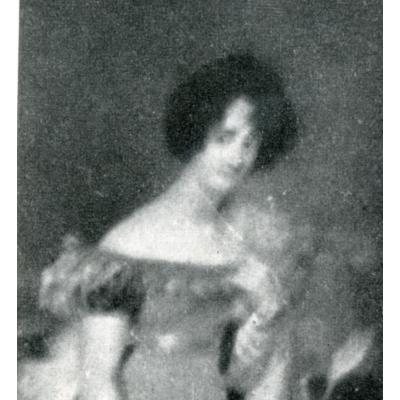Scheda
So-called “la Sampireina” in Bologna, she married her cousin Francesco Giovanni Sampieri in Rome in 1818 (Guidicini, Diario, IV, p. 54). According to Rangone, (Cronaca, B 2947, c. 865), never kind towards the Sampieri family, «la moglie non è che bellina, e a molto orgoglio e niuna coltura, unisce lo spirito simpatico e antipatico per cui assai male disimpegna gli onori della civil società» («his wife is nothing more than nice and she joins, to a big pride and an insignificant culture, both a pleasant and an unpleasant spirit, so she poorly performs the honours of the civil society»). Even De Buoi (p. 304) treats of the marriage: «Arrivò la Sposa del Signor Marchese Giovanni Francesco Sampieri la Signora Donna Anna de’ Gregori Squillace di lui carnale cugina che per ricostruirsi il Palazzo Sampieri dalla Mercanzia andò ad abitare alla bella Villa di Casalecchio» («Arrived the Bride of Sir Marquis Giovanni Francesco Sampieri, Madam Anna de’Gregori Squillace, his cousin of blood, who, to rebuild Palazzo Sampieri dalla Mercanzia, went to live in the beautiful villa in Casalecchio»). It wasn’t a happy union: it ended up in a judicial separation in 1844, after Anna had secretly given birth to a son, born out of a relationshiprelationship between her and marquis Alessandro Guidotti (Mari, Al Tribunale). The letters sent to her cousin Antonio Bentivogli, kept in the Archiginnasio, reveal that, even before Guidotti, an unidentified “German official” had awakened the jealousy of Sampieri, who, besides, was known to have a house in Florence where he lived «assai famigliarmente costituendo un unico focolare» («in a very familiar way, making out just one household») with a Bolognese lady separated from her husband. A daughter, Carolina, was born in 1829 of this marriage, in 1849 she married the French marquis Dionigio Talon and died in 1916. Anna De Gregorio died on November 3, 1886 (Rossi, La Sampireina, pp. 473-481).







